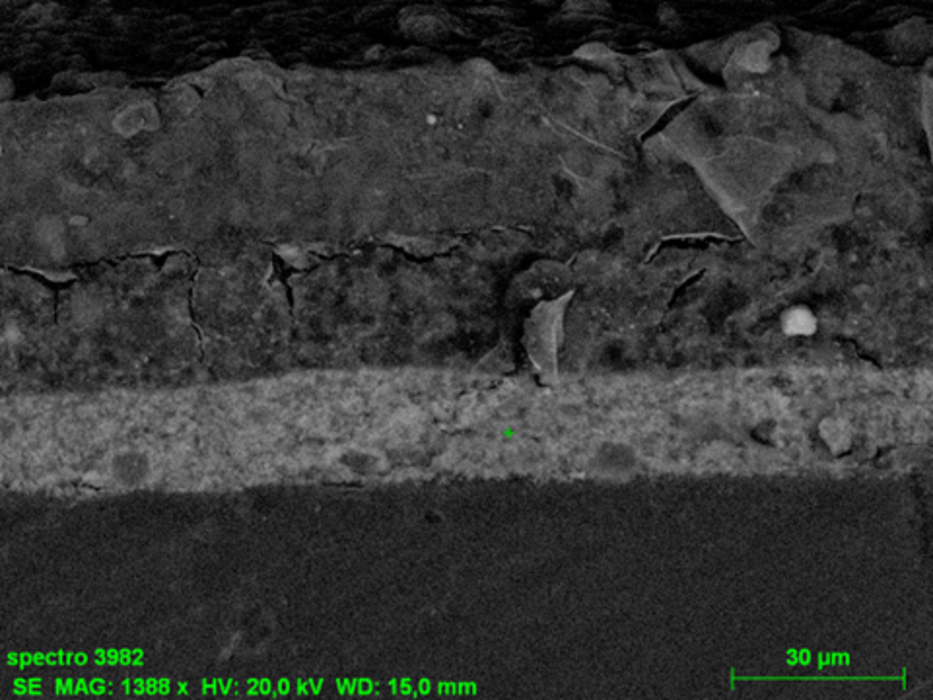There are many ways of characterising surfaces
They are used to study the physical, chemical and structural properties of material surfaces.
Here are a few examples of commonly used techniques:
-
Scanning electron microscopy (SEM-EDX): SEM-EDX is a technique for observing the topography of the surface of materials on a micrometric scale. It can also be used to obtain images of surface morphology and structure, as well as information on elemental composition.
-
Atomic force microscopy (AFM): AFM is a technique for measuring intermolecular forces and mapping the surface topography of materials on a nanometric scale. It can also be used to measure the roughness, hardness, adhesion and other mechanical properties of surfaces.
-
X-ray photoelectron spectroscopy (XPS): XPS is a technique for measuring the chemical composition of the surface of materials. It can detect the elements present in the surface and determine their oxidation state. It also provides information on the density of electronic states and the depth of electron penetration.
-
Fourier Transform Infrared Spectroscopy (FTIR): FTIR is a technique for analysing the molecular vibrations of chemical bonds present on the surface of materials. It can be used to characterise the functional groups present on the surface and to detect molecular interactions.
-
X-ray diffraction (XRD): XRD is a technique used to determine the crystalline structure of materials at the surface. It can be used to measure lattice parameters, crystal size and the presence of crystalline defects.
-
Contact angle: this technique measures the angle between the surface of a material and a liquid placed on the surface. It provides information on the wettability and adhesion of surfaces.
-
Secondary Ion Mass Spectrometry (ToF-SIMS): TOF-SIMS (Time-of-Flight Secondary Ion Mass Spectrometry) is a surface analysis technique used to characterise the chemical composition and spatial distribution of elements and molecules present on the surface of a solid sample.
In summary, surface characterisation techniques are varied and can be used to characterise different aspects of the surface properties of materials.
These techniques are widely used in many fields, including materials science, engineering, physics, chemistry and biology.
Do you have a problem with adhesion or corrosion?
Do you suspect pollution?
Would you like to optimise your surface treatment or functionalisation process?
Then contact us!


